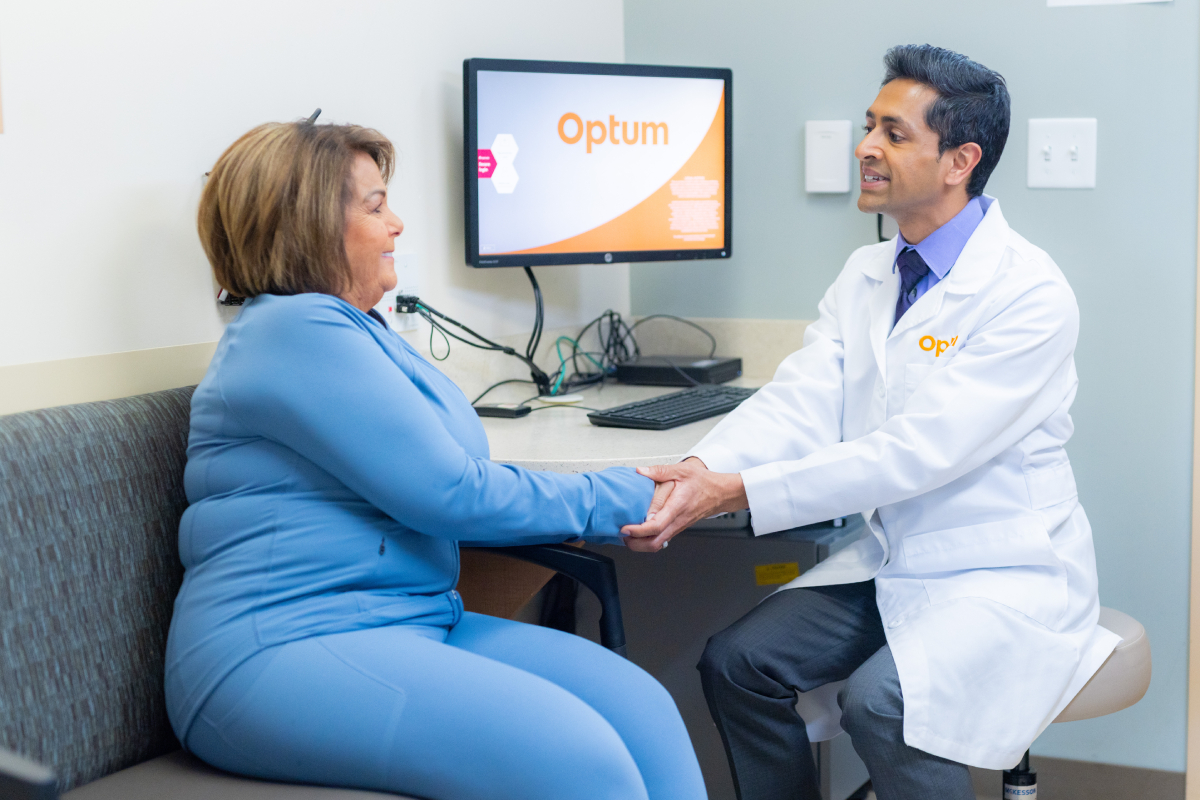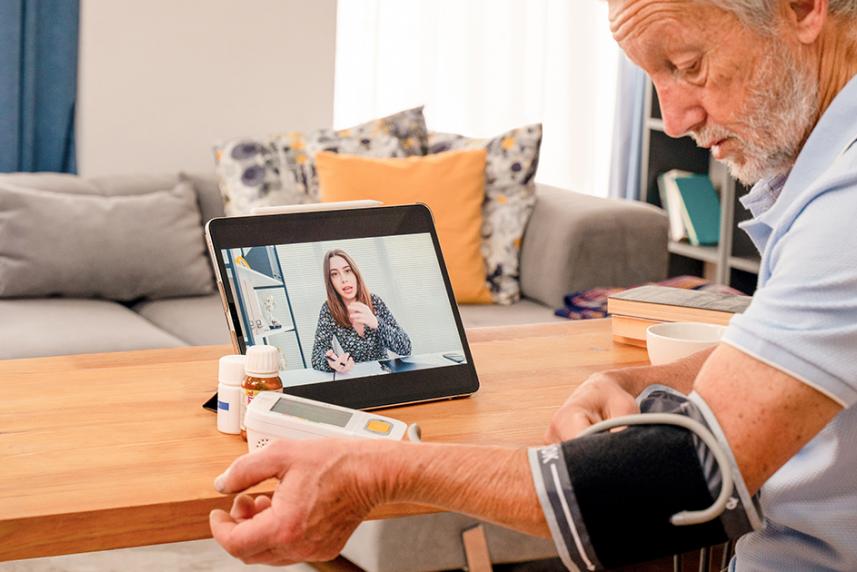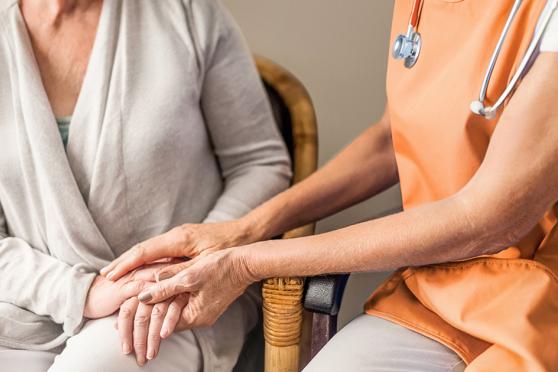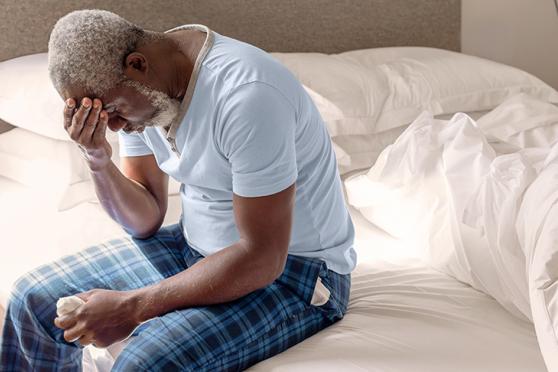
How to keep tabs on your blood pressure at home

Staying on top of your numbers can be a smart health step. Here’s what to look for in a monitor, and how to get readings you can trust.
Blood pressure may be something you don’t think about much until your doctor measures it. But as you get older, your provider may suggest checking your numbers more often.
Learning to check your own blood pressure at home, and doing it regularly, can lead to significant improvements in health, says Tatiana Tsvetkova, MD. She’s a cardiologist at Southwest Medical, part of Optum Care, in Las Vegas, Nevada.
High blood pressure increases your risk of serious health problems like heart disease, stroke, and kidney failure.1 “The goal is to keep blood pressure at what’s considered normal, which is less than 120/80,” says Dr. Tsvetkova.
But what exactly do those numbers mean? And how can tracking their rise and fall improve your health? Read on to learn the basics of measuring your blood pressure at home. Plus, you’ll find lifestyle changes that may help you bring your numbers down.

What is my blood pressure?
Whether your doctor measures your blood pressure or you do it yourself at home, the result will come in two numbers. Those might be something like 130/80 or 115/70, for instance.
Both numbers show the amount of pressure your blood is putting on your artery walls. But they show it at different times, according to the American Heart Association (AHA):2
- The first number, called systolic blood pressure, measures the pressure during a heartbeat. That’s when your heart pumps.
- The second number, called diastolic blood pressure, measures the pressure between beats. That’s your pressure at rest.
- These numbers are both measured in mm Hg, which means “millimeters of mercury.”
Normal systolic blood pressure is less than 120 mm Hg, and normal diastolic blood pressure is less than 80 mm Hg. So, as an example, if your blood pressure reading is 118/78 mm Hg, it’s at a healthy level.2
If your first number is 130 or higher, or your second number is 80 or higher, you have high blood pressure, also called hypertension.2
There is also a category called “elevated blood pressure.” This is when your second number is normal (less than 80 mm Hg) but your first number is 120 to 129 mm Hg. This is not hypertension, but it’s close enough that your doctor will want to address it.2
“About half of people in the United States have hypertension, which is blood pressure higher than 130/80,” says Dr. Tsvetkova. And in most cases, people don’t have symptoms, so you may not even realize it’s a problem.
“It’s not enough to have your blood pressure measured just once or twice a year at a checkup,” Dr. Tsvetkova says. You may also need to check your blood pressure regularly at home. This can help ensure that your hypertension is controlled and help guide treatment, she adds.
An Optum doctor or specialist can help you keep tabs on your blood pressure, too. Find an Optum doctor.
How do I choose an at-home blood pressure monitor?
You don’t need to spend a lot. To buy the right blood pressure monitor, follow these recommendations from the AHA:3
- Choose a monitor that has been validated by medical professionals.
- Pick an automatic, cuff-style monitor for the upper arm.
- Don’t use wrist and finger models. They often give inaccurate readings.
- Be sure the cuff fits your arm. A standard cuff size may be too large or too small for some people.
Some monitors have digital memory to keep a record of your readings. This may be easier than keeping a manual record.4
How do I use my blood pressure monitor?
After you buy a monitor, take it to a doctor’s appointment, says Dr. Tsvetkova. That will allow you to test it for accuracy and ensure you’re using it correctly.3
You can have your blood pressure taken with clinical equipment at the doctor’s office, and then you can take it again using your new monitor. If the readings are off, your doctor will be able to determine whether the monitor is reliable. It’s normal for the readings to be a little different, but the difference should be small, Dr. Tsvetkova says.
Here’s what to do to get the most accurate reading:3, 5
- Don’t exercise or drink caffeine for 30 minutes beforehand.
- Sit quietly with your legs uncrossed for five minutes.
- Rest your arm on a table or the armrest of a chair.
- Place the cuff against your skin (not over clothing), just above the bend in your elbow.
- Make sure that you’re still and not talking or moving.
Take your blood pressure at the same time each day. That might be once in the morning and once at night, depending on what your doctor recommends.3
To ensure accuracy, take each measurement twice. You’ll want these readings to be one to three minutes apart.6
If your monitor does not automatically save each reading, track them manually. You can jot them down in a notebook or keep a record on your smartphone or tablet.3
What lifestyle habits can help improve my blood pressure?
If you discover that you have hypertension, your doctor may prescribe medication. But if your blood pressure is just slightly elevated, they might not treat it with medication right away.
Either way, there are lifestyle habits that can help reduce blood pressure, says Dr. Tsvetkova. These include:7
- Exercise for at least 30 minutes a day (such as by taking a brisk walk)
- Eat a healthy diet
- Reduce salt (sodium) intake
- Limit alcohol
- Quit smoking
- Get good sleep
- Manage stress
- Maintain a healthy weight
When should I talk to my doctor?
A single high blood pressure reading may not be cause for alarm. But if your readings are consistently higher than usual, call your doctor.4
If you’re taking medication and making lifestyle changes to lower your blood pressure, you could start seeing your numbers fall into a healthier range. Even so, your Optum doctor may recommend continuing to monitor your numbers at home. You and your Optum care team will come up with a personalized plan that’s right for you.
Sources
- Mayo Clinic. High blood pressure dangers: Hypertension’s effects on your body. Last updated November 28, 2023. Accessed January 11, 2024.
- American Heart Association. Understanding blood pressure readings. Last reviewed May 30, 2023. Accessed January 11, 2024.
- American Heart Association. Monitoring your blood pressure at home. Last reviewed May 30, 2023. Accessed January 11, 2024.
- Mayo Clinic. Get the most out of home blood pressure monitoring. Last updated July 8, 2022. Accessed January 11, 2024.
- Centers for Disease Control and Prevention. Measure your blood pressure. Last reviewed January 9, 2024. Accessed January 11, 2024.
- American Heart Association. Managing high blood pressure medications. Last reviewed June 7, 2023. Accessed January 11, 2024.
- Mayo Clinic. 10 ways to control high blood pressure without medication. Last updated July 12, 2022. Accessed January 11, 2024.
© 2024 Optum, Inc. All rights reserved. Do not reproduce, transmit or modify any information or content on this website in any form or by any means without the express written permission of Optum.
The information featured in this site is general in nature. The site provides health information designed to complement your personal health management. It does not provide medical advice or health services and is not meant to replace professional advice or imply coverage of specific clinical services or products. The inclusion of links to other websites does not imply any endorsement of the material on such websites.
Consult your doctor prior to beginning an exercise program or making changes to your lifestyle or health care routine.
Stock photo. Posed by model.



